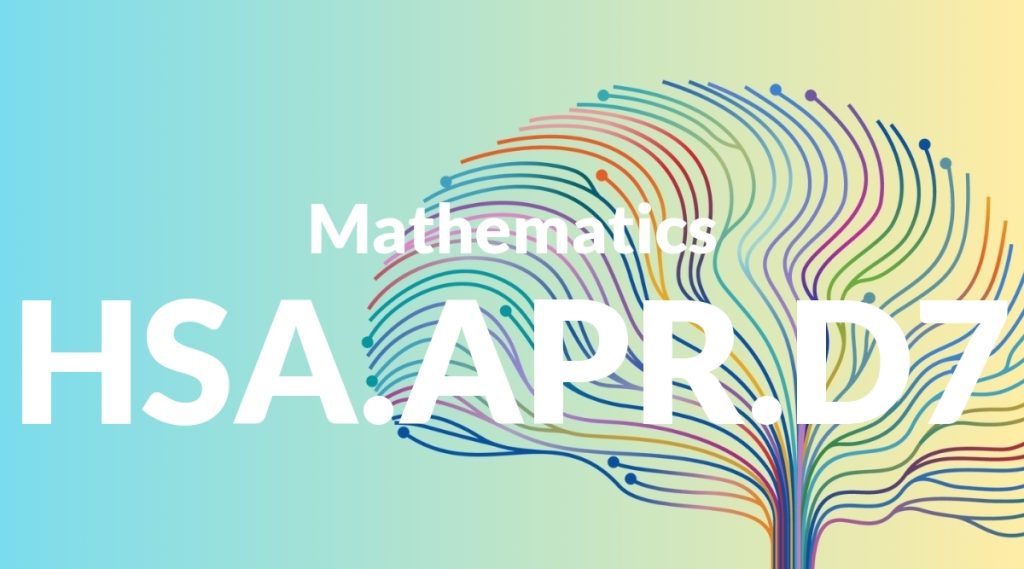Standard: HSA.APR.D7 – (+) Understand that rational expressions form a system analogous to the rational numbers, closed under addition, subtraction, multiplication, and division by a nonzero rational expression; add, subtract, multiply, and divide rational expressions.
Grade level: High School: Algebra
Subject: Mathematics
Domain: Arithmetic with Polynomials & Rational Expressions
Teacher Overview
This standard focuses on understanding and performing arithmetic operations with rational expressions, which is an essential skill in algebra. It builds on students’ knowledge of polynomial operations and extends it to rational expressions, preparing them for more advanced mathematical concepts. Students should be proficient in basic algebraic operations, including addition, subtraction, multiplication, and division of polynomials. They should also know how to factor polynomials and simplify algebraic fractions.
Mastering this standard will enable students to tackle more complex algebraic equations involving rational expressions and prepare them for calculus and other advanced mathematics courses. These skills are also applicable in various real-world contexts, such as engineering and economics.
Common Misconception 1
A common misconception is that rational expressions cannot be simplified like rational numbers. This is incorrect because rational expressions, like rational numbers, can often be simplified by finding common factors in the numerator and denominator.
Intervention 1
To address this misconception, use visual aids and step-by-step examples to demonstrate the process of simplifying rational expressions. Emphasize the similarities between simplifying rational numbers and rational expressions.
Common Misconception 2
Another misconception is that division by a rational expression is always undefined. This is not true; division by a nonzero rational expression is defined and can be performed similarly to division by rational numbers, provided the denominator is not zero.
Intervention 2
To correct this misconception, provide examples where division by a nonzero rational expression is valid. Explain the conditions under which division is defined and emphasize the importance of checking that the denominator is not zero.
Prerequisite Knowledge
Students should have a strong understanding of basic algebraic operations, including addition, subtraction, multiplication, and division of polynomials. They should also be familiar with factoring polynomials and simplifying algebraic fractions.
Subsequent Knowledge
After mastering this standard, students will be able to solve more complex algebraic equations involving rational expressions and apply these skills in calculus and advanced mathematics courses. They will also be better prepared for real-world problem-solving in various fields such as engineering, physics, and economics.
Instructional Activities
- Simplifying rational expressions using factoring
- Performing arithmetic operations with rational expressions
- Solving real-world problems involving rational expressions
- Using visual aids and manipulatives to illustrate concepts




